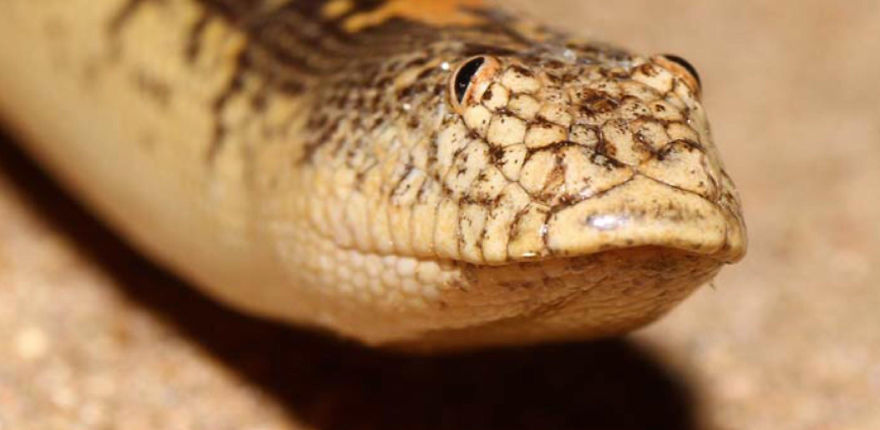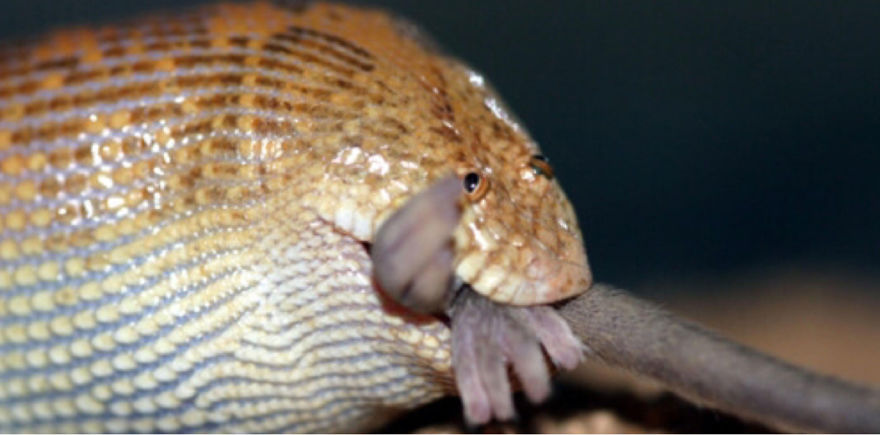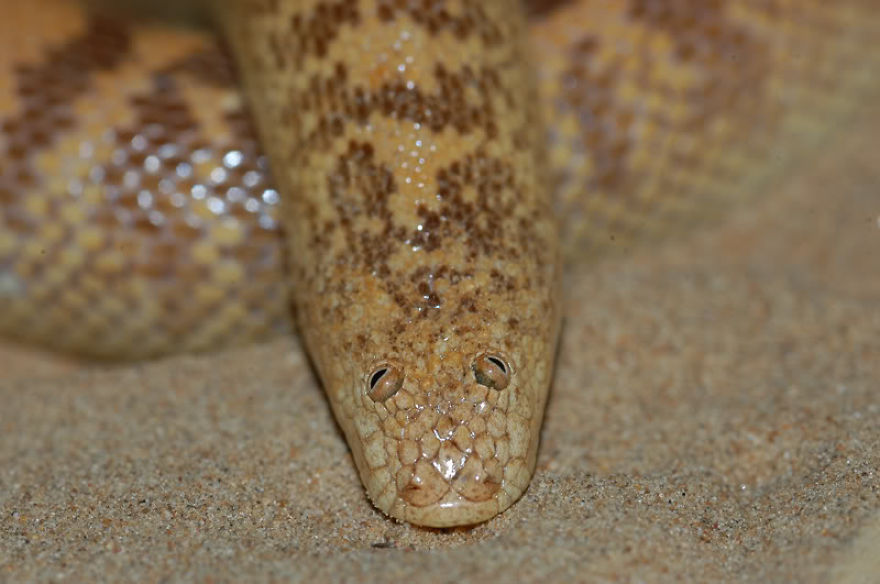
Possibly Derpiest Animal Alive Looks Like An 8-Year-Old’s Drawing Came To Life
Some would say that searching the Web is like opening a Pandora’s box. Alright, alright, it may not be that dramatic, but the point stays that you can never know what you’ll find there. The Internet a goldmine for craziest things, so it would only make sense. It’s not the first time we marvel at something hilariously odd here at Bored Panda. But this Arabian Sand Boa really is something to look at.
It doesn’t mean this funny animal is any less special, though. After all, her majesty Mother Nature is responsible for this one, and it’s probably safe to say she has the highest score with oddities here. Nevertheless, we would sure like to add one tiny accessory to this Boa snake.
More info: Science Direct
The Arabian Sand Boa is a harmless species, living only in the Arabian Peninsula
Image credits: Unknown
Even though the peninsula’s terrain is of a very wide variety, containing everything from green forests and mountains, a huge part of it is covered by a sandy desert, which happens to be a perfect habitat for these sand snakes.
It’s extremely tolerant to wide range of temperatures
Image credits: Unknown
Since the desert is where sand boas spend most of their time in, they are well accommodated with dramatic temperature conditions. And it only makes sense, knowing the temperature can differ approximately 50 degrees Celsius during the night and day.
The snake mostly preys on small reptiles
Image credits: Unknown
These googly-eyed snakes don’t like to try too hard, so they can mostly be seen munching on something that can be quickly swallowed whole, like small lizards or geckos.
They are quite odd species among the other boas
Image credits: Unknown
Unlike most Boas, these types of snake lay eggs. There are only three other boa species that do that.
It buries itself in the sand during the daytime
Image credits: Unknown
Despite being adapted to temperature changes, this weird animal seems to prefer the night and spends most of the day deep in the sand, emerging only at dusk.
Moving up to wander at dawn
Image credits: Unknown
During the nighttime, it’s rare for a sand boa to refuse a little adventure.
They are commonly known because of their small eyes
Image credits: Unknown
Being probably one of the most peculiar features, sand boa’s funny eyes draw a lot of attention. Despite that, the scientists are not sure if there’s a particular reason to them being so small or is it just a tiny nature’s mischief. Doesn’t it remind you anything, though?
The Internet was quick to comment on their oddities
159Kviews
Share on FacebookThe eyes are NOT a scientific mystery. They're small and positioned high because the species hunts buried in sand. It helps prevent the sand from getting in the eyes and reduces visibility of the snake to prey species since they are reduced in size. All snakes lack eyelids so these adaptations are important to protect its eyes.
The eyes are NOT a scientific mystery. They're small and positioned high because the species hunts buried in sand. It helps prevent the sand from getting in the eyes and reduces visibility of the snake to prey species since they are reduced in size. All snakes lack eyelids so these adaptations are important to protect its eyes.

 Dark Mode
Dark Mode 

 No fees, cancel anytime
No fees, cancel anytime 





























































272
54